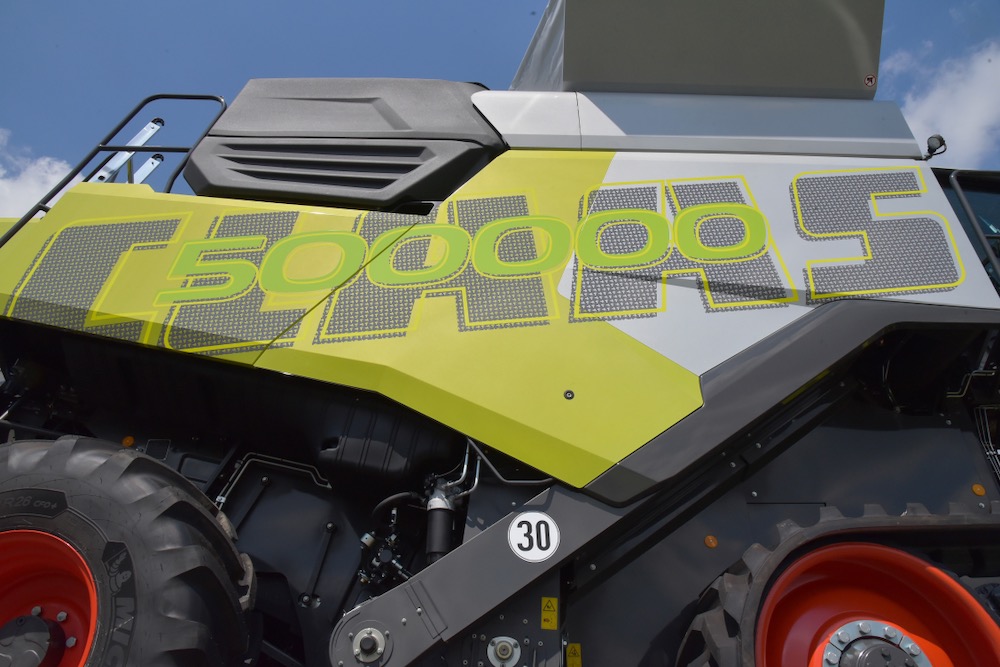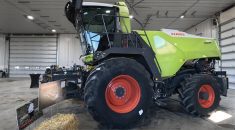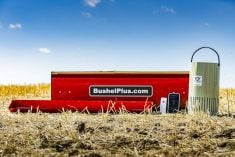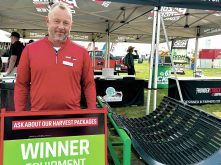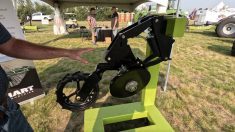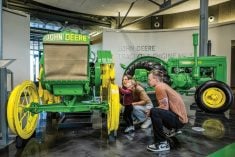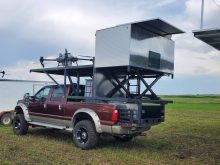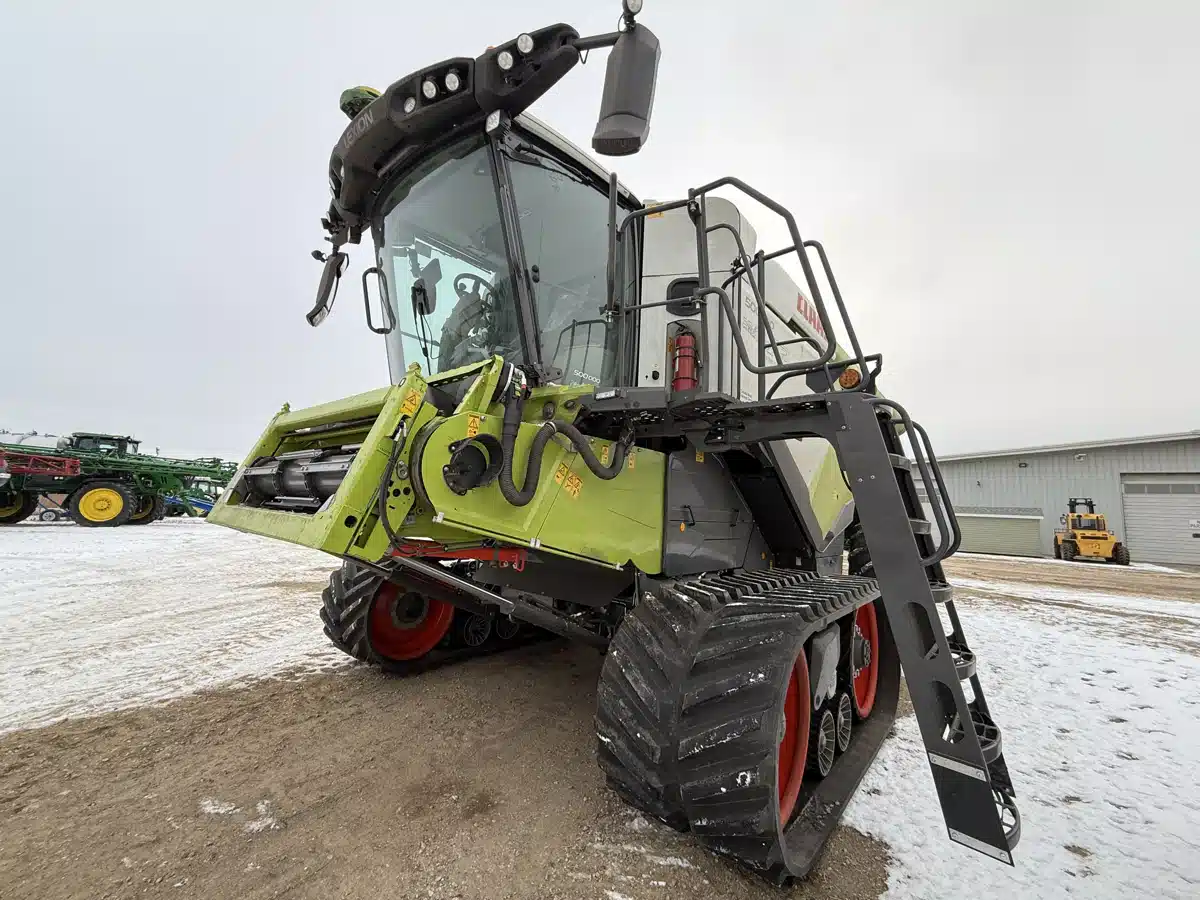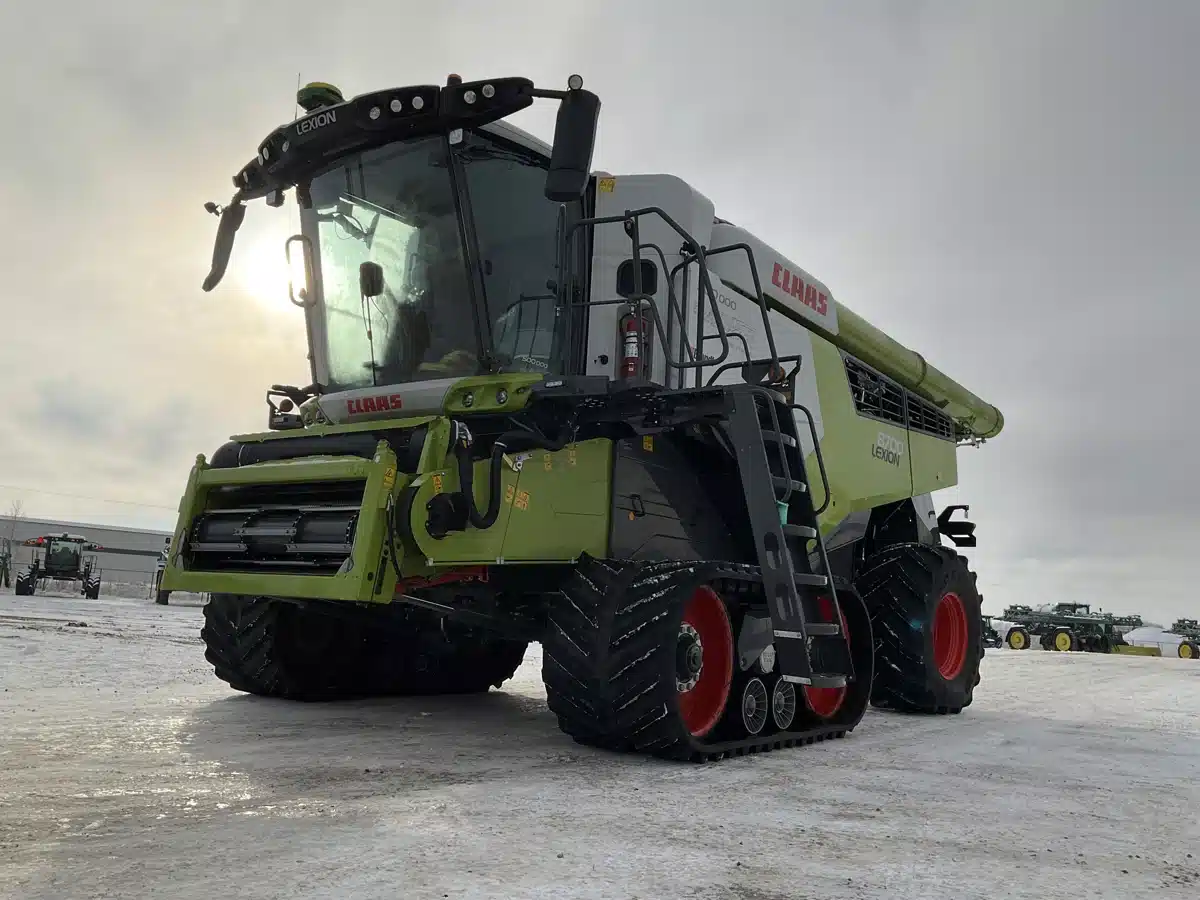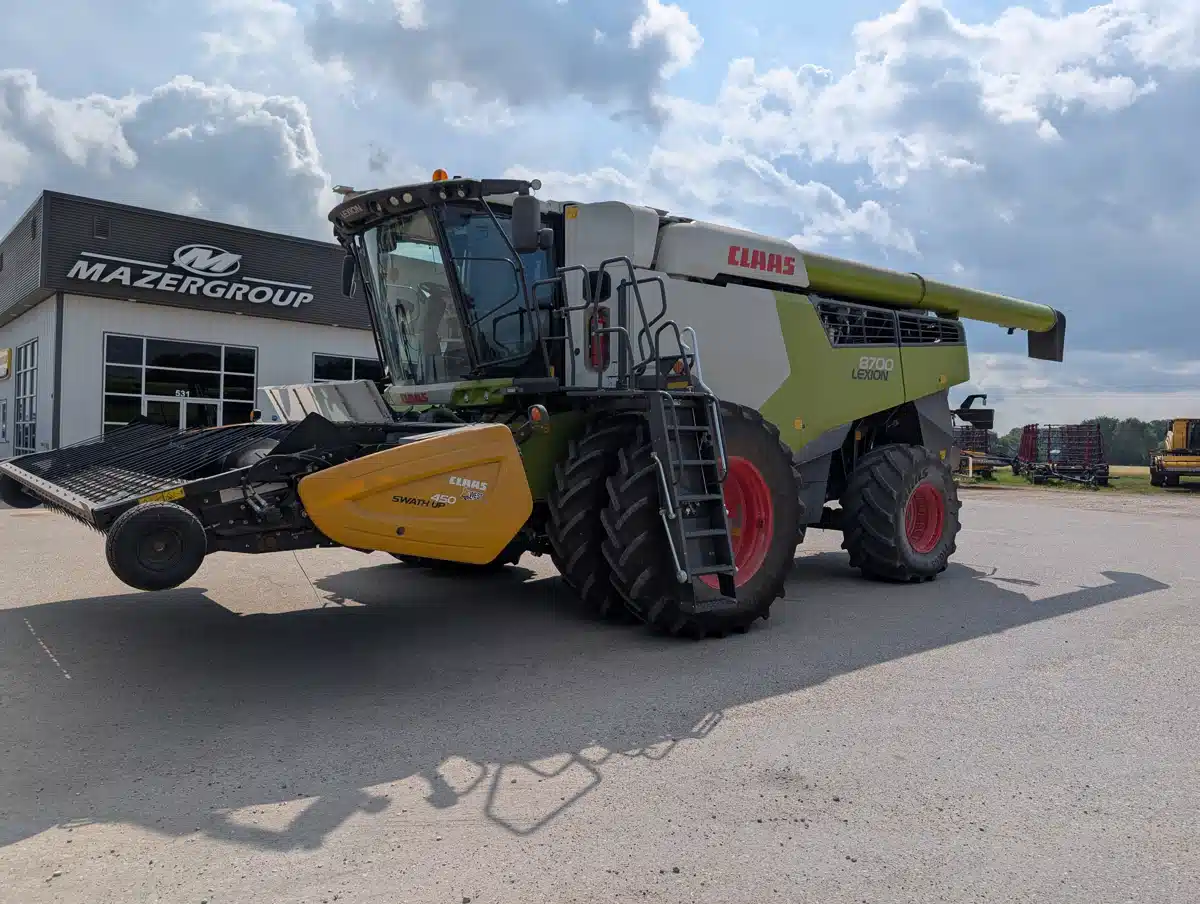Claas is celebrating a significant milestone in combine production this year: its 500,000th machine will roll off the production line. And special-edition machines will be making the rounds to farm shows this year — including Ag in Motion — sporting a unique look.
The brand began combine production back in 1936 at its Harsewinkel, Germany plant. Its first machine was known as a mowing-threshing-binder, or the German acronym MDB for short. In 1946 Class updated to the Super Series machines, which were a step up from the MDB. As the series evolved, it was available with add-on engines starting in 1953 and with a hydraulic cutting unit drive starting in 1958, under its new moniker Super Automatic. More than 60,000 Supers were marketed worldwide, including here in Canada as well as in Uruguay.
One Class combine many senior Canadian farmers might recognize is the Matador, which debuted in 1962. The Matador was marketed here for a while by CCIL (Canadian Cooperative Implements Ltd.), and wore the CCIL livery. Many were still in use well into the late 1970s — and you could could always find one or two in the odd spring or fall auction sale around the Prairies until then. Having that CCIL name on the side kind of hid the fact it was actually a Claas.
Read Also

Claas brings 1000 Series SP forage harvesters to Canada
In mid-August, Claas unveiled its new line of Jaguar forage harvesters at an event in Visalia, California, deep in the heart of that state’s dairy region.
Over the years there were Claas machines hiding under different color paint colours at other brands as well.
In 1965 Ford signed an agreement to market Claas combines badged as Fords. A few different models, including the Ford 622 and 642, were on the market that way until the early 1980s. In 1989 Claas signed an agreement with Massey Ferguson where the Dominator 98 and 108 models were available in Massey Ferguson red and known as the MF 8450 and 8460 straw walker models.
In 1997 Claas and Caterpillar formed a joint venture to manufacture and retail Claas’ Lexion line of combines together in North America. While the Lexion name was retained, again, the Claas name wasn’t dominant. It was the Caterpillar brand name that the machines wore on their flanks, on top of Caterpillar yellow and black paint.
A U.S. plant was built in Omaha to accommodate Lexion production; the threshing bodies were built at Harsewinkel and shipped to Omaha for final combine assembly.
Claas eventually took full ownership of the Omaha production facilities, and Cat left the agricultural equipment business completely after having already sold off its Challenger tractor line to Agco, although some Lexion combines and Challengers continued to be sold through Caterpillar dealers. Lexions kept the yellow and black colour scheme until 2019, then switched back to the brand’s original colours.
Of those 500,000 Claas machines sold worldwide, about 75,000 of them have been Lexions.
In the past few years, Claas has significantly expanded the range of farm machines it sells on this continent. Last year at AiM was the North American debut of the very-high horsepower, two-model 12 Series Xerions and the three-model line of Arion front-wheel assist tractors — the first time it had ever held a major new tractor launch outside of Europe.


